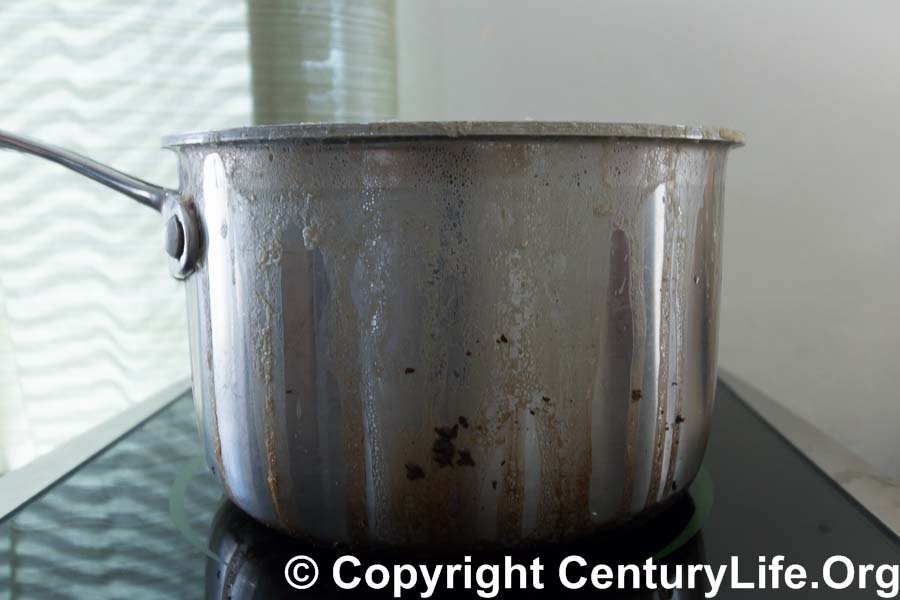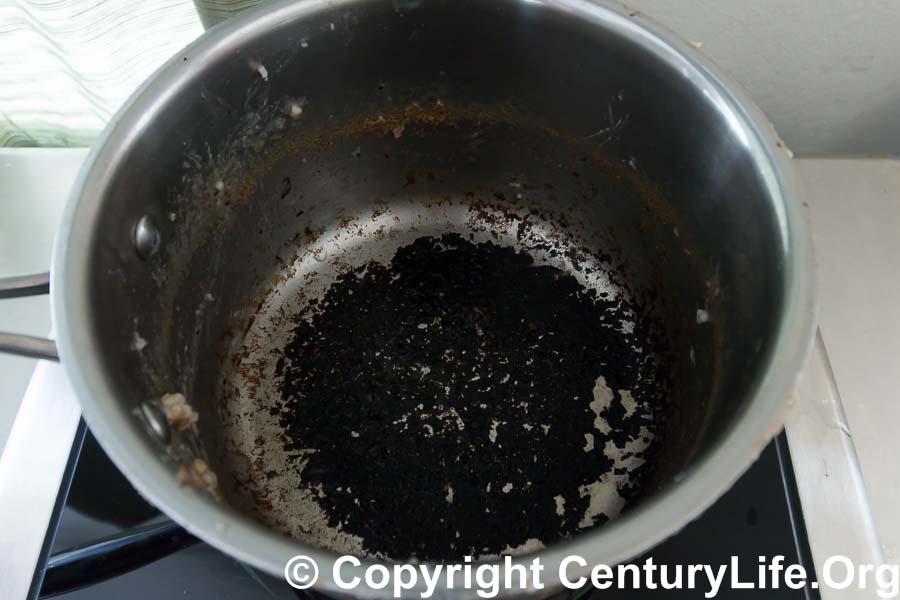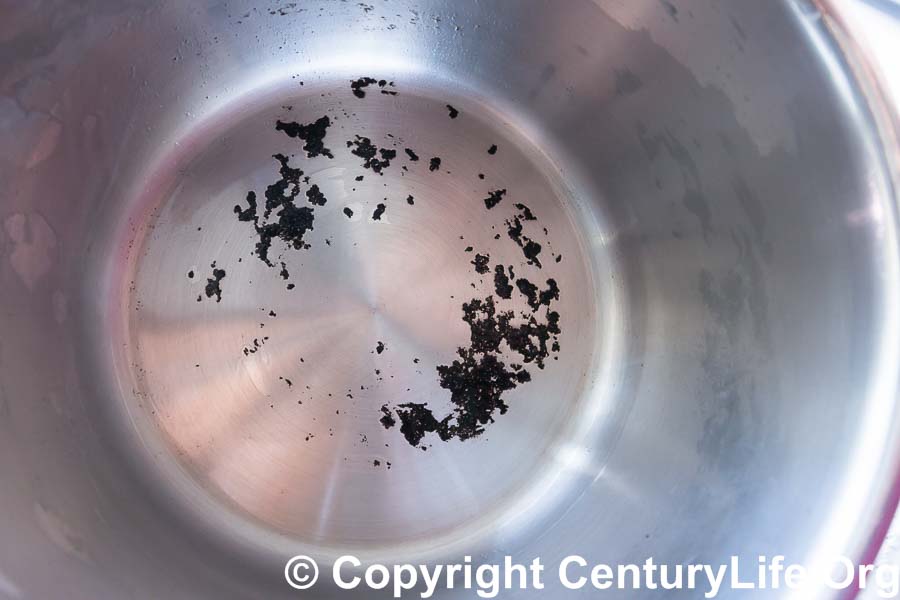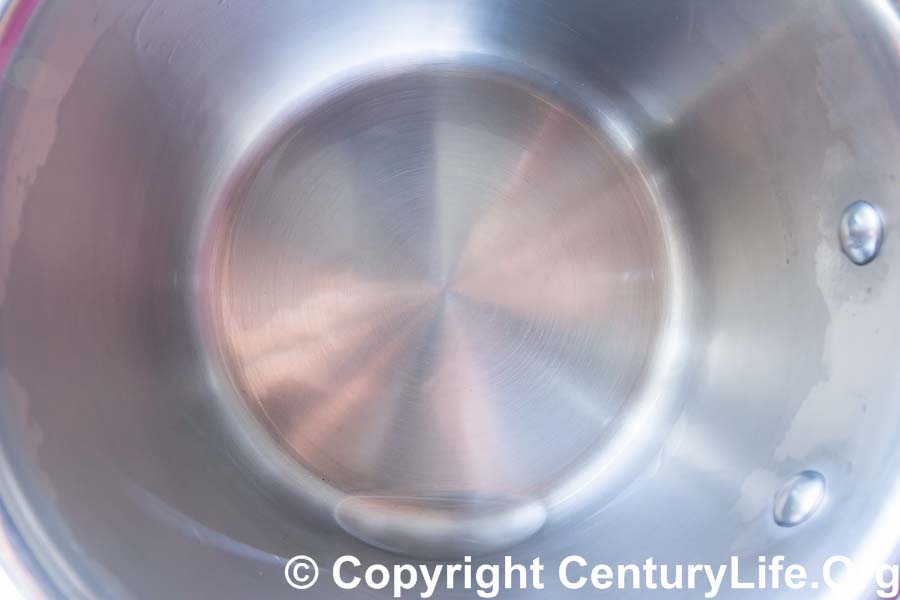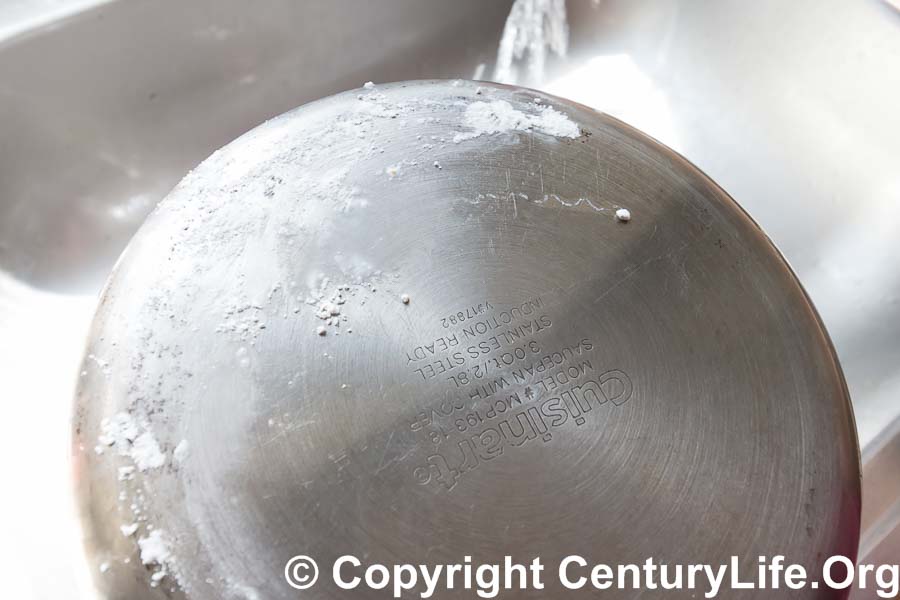PRODUCT REVIEW: BAR KEEPERS FRIEND
“The answer to life’s problems: F it. BKF it!” –unused advertising jingle
Okay, they’ll never use that line as an advertising jingle, but I do want to shine a spotlight on my favorite way to quickly clean stainless steel and copper cookware: Bar Keepers Friend (all varieties)!
Many people gravitate to cookware that has stainless steel inner linings, but discover that stainless steel discolors easily. The discoloration usually comes from two sources:
- Rainbow discoloration often stems from overheating the metal or oil residue1
- Grungy/white discoloration often stems from food residue or sometimes hard water (mineral stains left behind by water that has metal in it)
Regardless of why your stainless steel is discolored, the easiest way to get rid of it is to use a weak acid such as oxalic acid. Oxalic acid is a natural acid found in nature (e.g., you can find oxalates in spinach and potatoes), but that doesn’t mean you should eat a lot of it. Thoroughly rinse out any cookware you wash, regardless of whatever cleaning agent you use.
- Oxalic acid is commonly sold in canisters of Bar Keepers Friend Powder
, which is affordable, doesn’t take much space, and never expires. Just add it to the pan, add a little water to make a paste, and scrub lightly, letting the chemical do most of the work.
- There is also Bar Keepers Friend Cookware
which now come in silver-colored canisters. This is better for cookware because it’s less abrasive, according to the manufacturer. I’ve used both, and the difference is subtle. But since the Cookware version costs about the same as regular BKF, I’ve switched to the Cookware version.
- Also, you could also buy pre-made Bar Keepers Friend paste, but that’s less economic if you don’t mind adding your own water.
- You could also use citric acid, such as lemon slices, but those tend to cost more and not keep as well as canisters of BKF. Similarly, you could use white vinegar, but it’s usually sold in bulky jugs at 5% acetic acid concentration that take up a lot of space.
In my experience, a large canister of BKF lasts for several months and never expires. I like to use concentrated BKF, so I add only a small amount of water to a pan (just enough to cover the surface), mix in some BKF, let the chemical do its thing for a minute, and then scrub with a Scotch-Brite Non-scratch Scrub Sponge. Starch residues from beans/pasta/etc. will succumb to a BKF-enhanced scrubbing. So will black, burned-on gunk, though it will take a while (let the BKF sit for a minute–let the acid do some of the work). If you don’t want to press down at all while scrubbing, perhaps due to arthritis, I can personally recommend the OXO Good Grips Soap Dispensing Palm Brush (brushes are refillable)
which we use in our household because it’s easy to hold, and you can dispense dish detergent by squeezing it via the top button (which is well-designed and hard to accidentally squeeze).
Whatever acid you choose to use, don’t use a strong acid like sulfuric acid or undiluted hydrochloric acid, as those can corrode and etch stainless steel.
FOOTNOTES


